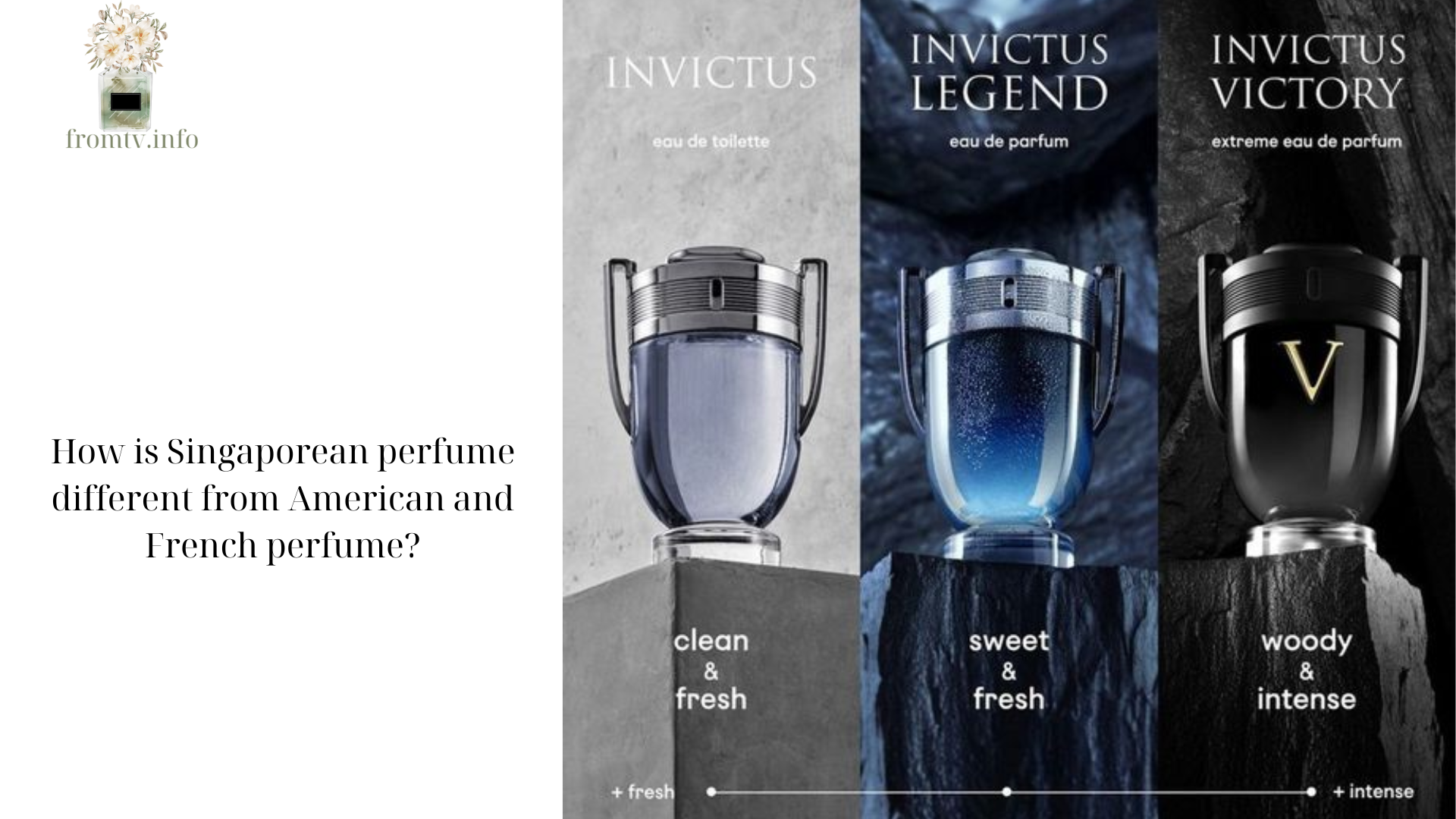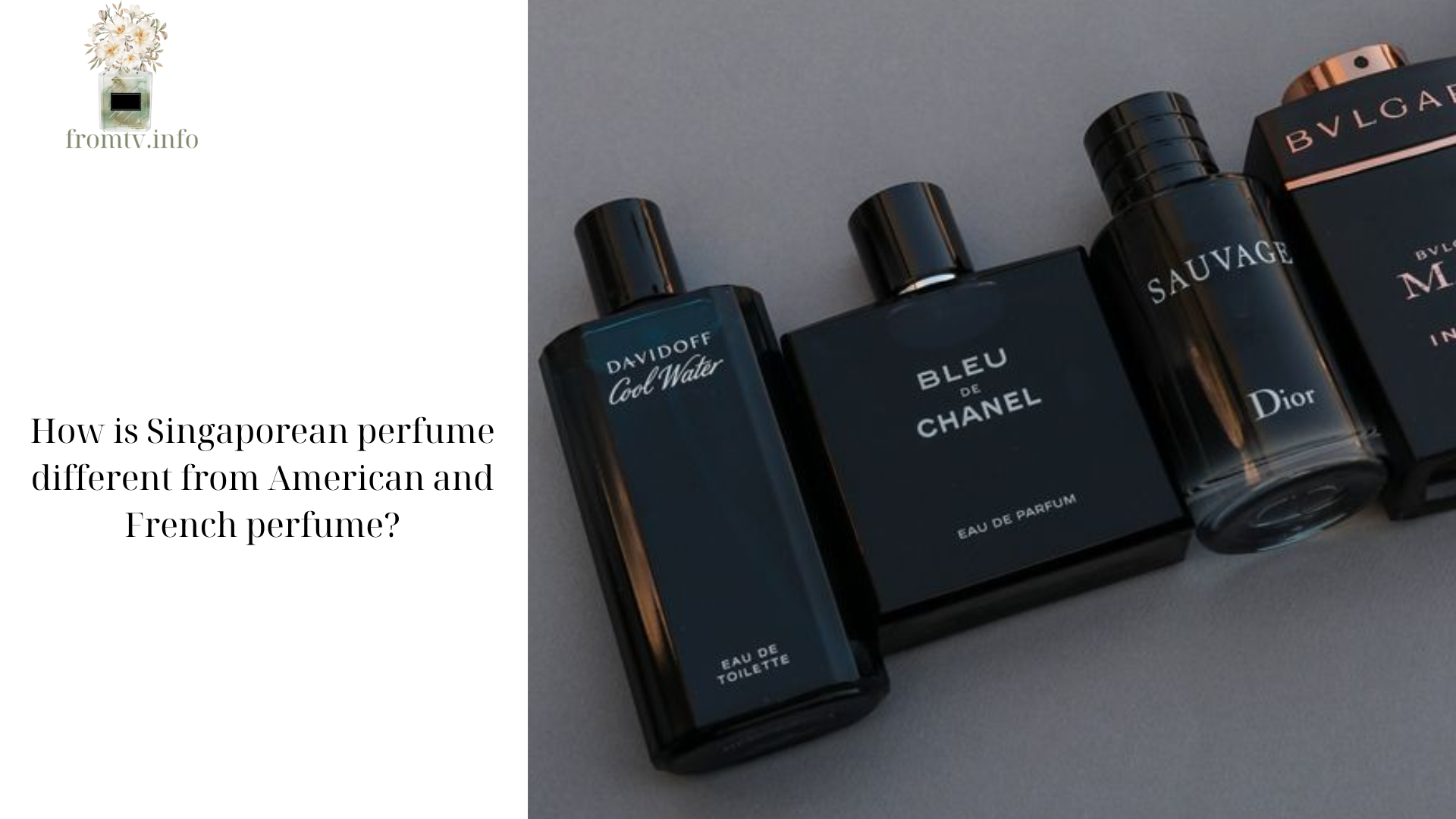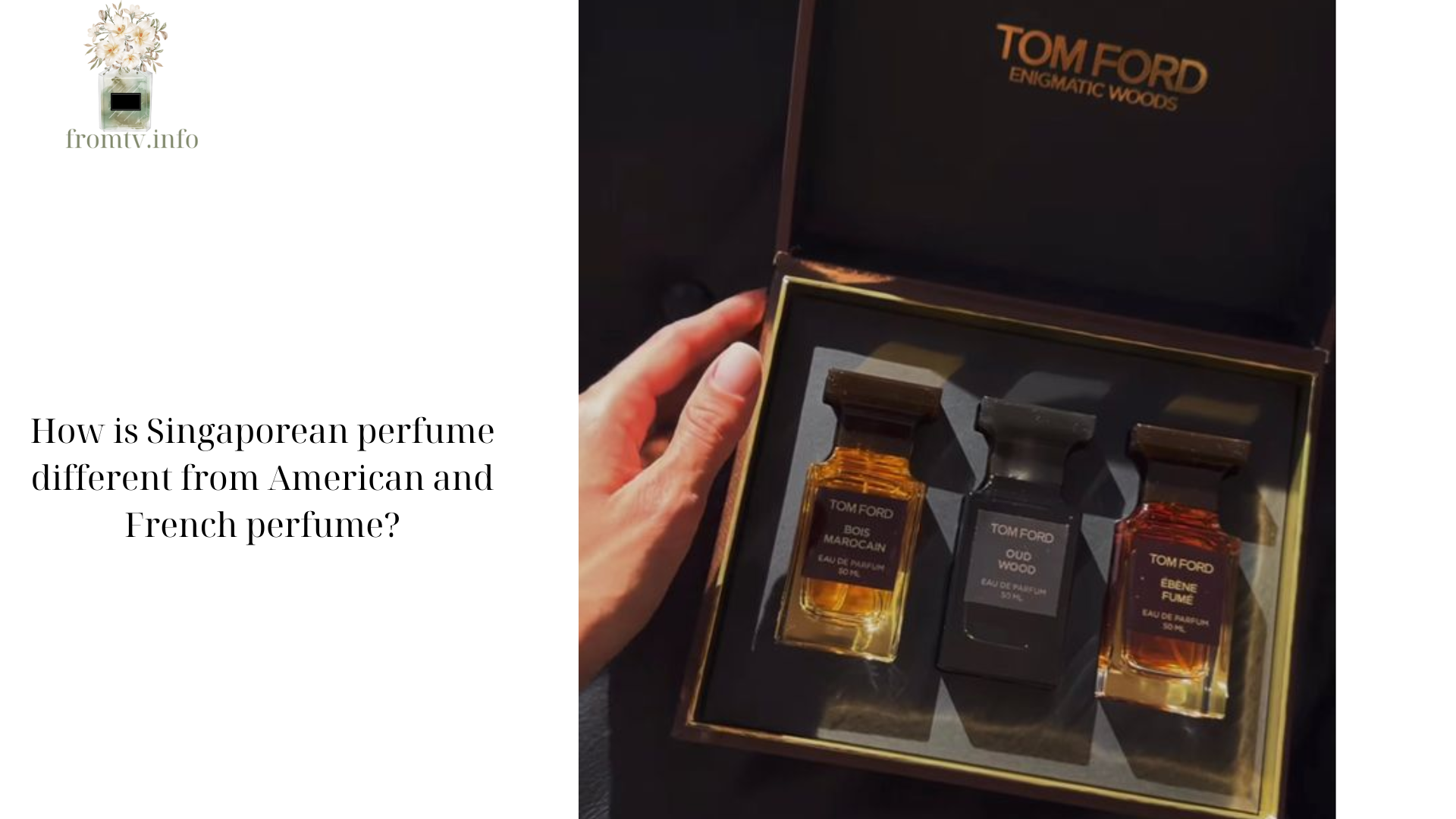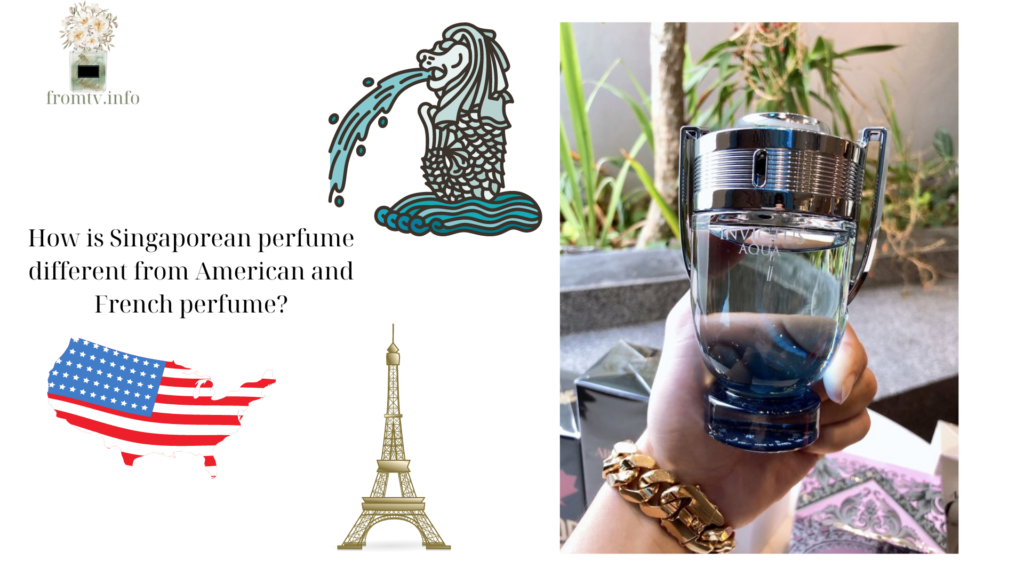Perfume is a reflection of culture, tradition, and individuality, with each region imparting its own unique characteristics and inspirations into their fragrances. Singaporean, American, and French perfumes are no exception and these three regions offer distinctive approaches to perfume-making, influenced by their respective histories, preferences, and environmental factors. In this article, Fromtv will explore How is Singaporean Perfume Different from American and French Perfume? And the key differences between Singaporean, American, and French perfumes, delving into their ingredients, styles, and market trends to understand what sets them apart.
Table of Contents
ToggleHow is Singaporean Perfume Different from American and French Perfume?

Historical and Cultural Influences
Singaporean Perfume
Singapore, a melting pot of cultures, has a rich and diverse history that influences its perfume industry. The country’s strategic location as a trading hub has exposed it to a plethora of scents and ingredients from around the world. Singaporean perfumes often reflect the multicultural tapestry of the nation, incorporating traditional Asian ingredients like sandalwood, agarwood (oud), jasmine, and tropical fruits. The local climate and flora also inspire fresh, airy, and sometimes spicy fragrances suitable for the warm and humid environment.
American Perfume
American perfumes are known for their innovation and diversity. The U.S. has a relatively young perfume industry compared to Europe but has rapidly developed a reputation for creativity and boldness. American perfumers often blend classic European techniques with modern, unconventional approaches. This results in a wide range of scents, from fresh and clean to bold and avant-garde. American perfumes frequently feature fruity, floral, and gourmand notes, catering to a broad audience with diverse tastes.
French Perfume
France, particularly the region of Grasse, is considered the birthplace of modern perfumery. French perfumes are synonymous with luxury, elegance, and tradition. They are often characterized by their complex compositions and sophisticated blends. French perfumers use high-quality natural ingredients and meticulously crafted synthetic notes to create harmonious and balanced fragrances. Classic French perfumes typically include notes of rose, lavender, iris, and jasmine, combined with intricate base notes like musk, amber, and vanilla.
Ingredients and Scent Profiles
Singaporean Perfume Ingredients
Singaporean perfumes frequently incorporate ingredients native to the region and those influenced by neighboring countries. Common ingredients include:
- Sandalwood: Known for its warm, woody aroma, sandalwood is a staple in many Singaporean perfumes.
- Agarwood (Oud): A prized ingredient in Asian perfumery, oud adds a rich, resinous, and slightly sweet note.
- Jasmine: This fragrant flower is often used for its sweet and intoxicating scent.
- Tropical Fruits: Notes like mango, papaya, and lychee add a fresh and exotic twist.
- Spices: Clove, nutmeg, and cardamom are commonly used to add warmth and complexity.
American Perfume Ingredients
American perfumes tend to feature a broad spectrum of ingredients, often blending natural and synthetic elements. Popular ingredients include:
- Citrus Fruits: Lemon, lime, and grapefruit are commonly used for their bright and fresh qualities.
- Berries: Notes of raspberry, strawberry, and blackberry add a sweet and playful character.
- Vanilla: Frequently used in gourmand scents, vanilla provides a warm and comforting sweetness.
- Florals: Rose, lily, and gardenia are popular for their classic and versatile floral profiles.
- Aquatic Notes: Marine and ozonic notes create clean and refreshing fragrances.
French Perfume Ingredients
French perfumes are renowned for their use of high-quality, natural ingredients, often sourced from Grasse. Key ingredients include:
- Lavender: A quintessential French ingredient, lavender adds a fresh and aromatic quality.
- Rose: A staple in many French perfumes, rose provides a timeless and elegant floral note.
- Iris: Known for its powdery and slightly woody scent, iris is a luxurious and sophisticated ingredient.
- Musk: Used for its warm and sensual base note, musk enhances the longevity and depth of the fragrance.
- Bergamot: Often used in the top notes, bergamot adds a bright and zesty character.
Fragrance Styles and Trends

Singaporean Fragrance Styles
Singaporean perfumes often reflect the region’s tropical climate and multicultural influences. Common styles include:
- Fresh and Aquatic: Light, airy, and refreshing scents that are ideal for the humid weather.
- Exotic and Spicy: Fragrances that incorporate rich spices and exotic ingredients for a unique and bold profile.
- Floral and Fruity: Sweet and vibrant scents that capture the essence of tropical flora and fruits.
American Fragrance Styles
The American perfume industry is known for its diversity and willingness to experiment with new trends. Popular styles include:
- Clean and Fresh: Scents that evoke a sense of cleanliness and simplicity, often with aquatic and citrus notes.
- Gourmand: Sweet and edible-smelling fragrances featuring notes like vanilla, caramel, and chocolate.
- Floral and Fruity: Playful and versatile perfumes that appeal to a wide range of tastes.
- Bold and Unconventional: Innovative and avant-garde scents that push the boundaries of traditional perfumery.
French Fragrance Styles
French perfumes are often associated with luxury and sophistication. Key styles include:
- Classic and Elegant: Timeless fragrances with complex compositions and high-quality ingredients.
- Chypre: A style characterized by a combination of citrus top notes, floral heart notes, and mossy base notes.
- Oriental: Rich and opulent scents with warm, spicy, and resinous notes.
- Floral: Refined and romantic fragrances featuring a bouquet of floral notes.
Market Trends and Consumer Preferences
Singaporean Market Trends
In Singapore, there is a growing demand for niche and artisanal perfumes. Consumers are increasingly seeking unique and personalized scents that reflect their individuality. Eco-friendly and sustainable fragrances are also gaining popularity, with an emphasis on natural ingredients and ethical practices.
American Market Trends
The American perfume market is characterized by its dynamic and trend-driven nature. Celebrity endorsements and influencer collaborations play a significant role in shaping consumer preferences. There is a strong interest in gender-neutral and unisex fragrances, as well as a rising demand for eco-conscious and cruelty-free products.
French Market Trends
The French perfume market remains deeply rooted in tradition and luxury. However, there is a growing interest in niche perfumery, with consumers seeking exclusive and artisanal scents. Sustainable and natural ingredients are also becoming more important to French consumers, reflecting a global shift towards environmentally conscious products.
Conclusion

While Singaporean, American, and French perfumes each have their unique characteristics, they all share a commitment to creating captivating and memorable fragrances. Singaporean perfumes stand out for their multicultural influences and tropical ingredients, American perfumes for their innovation and diversity, and French perfumes for their luxury and sophistication. Understanding these differences can help you appreciate the artistry behind each region’s approach to perfumery and guide you in finding the perfect scent that resonates with your personal style and preferences. Whether you’re drawn to the exotic allure of Singaporean perfumes, the bold creativity of American fragrances, or the timeless elegance of French scents, there is a world of olfactory delights waiting to be explored.

